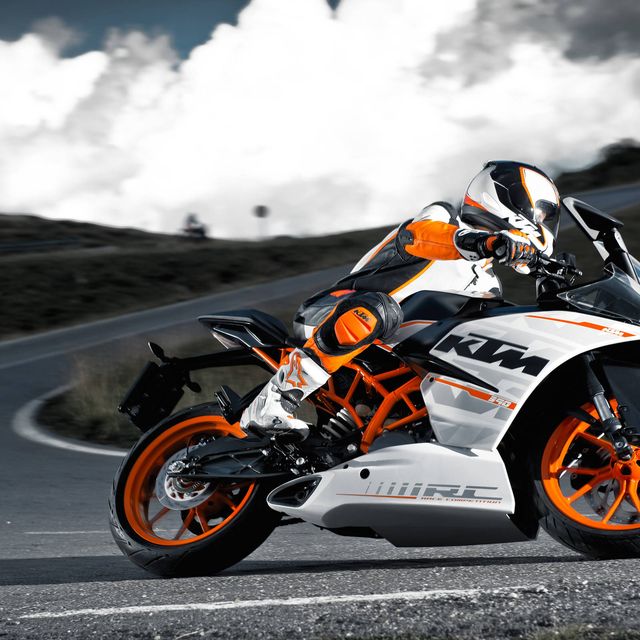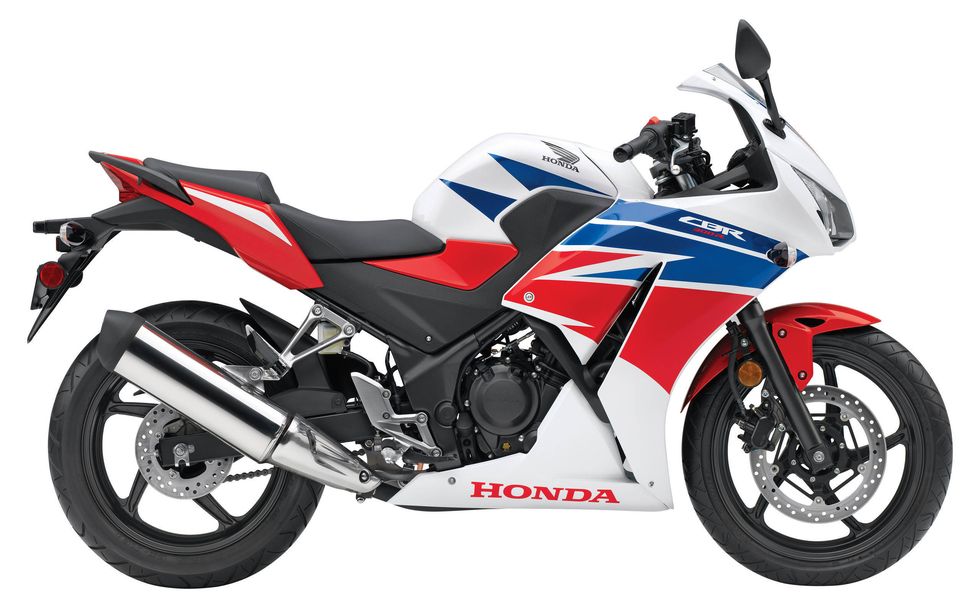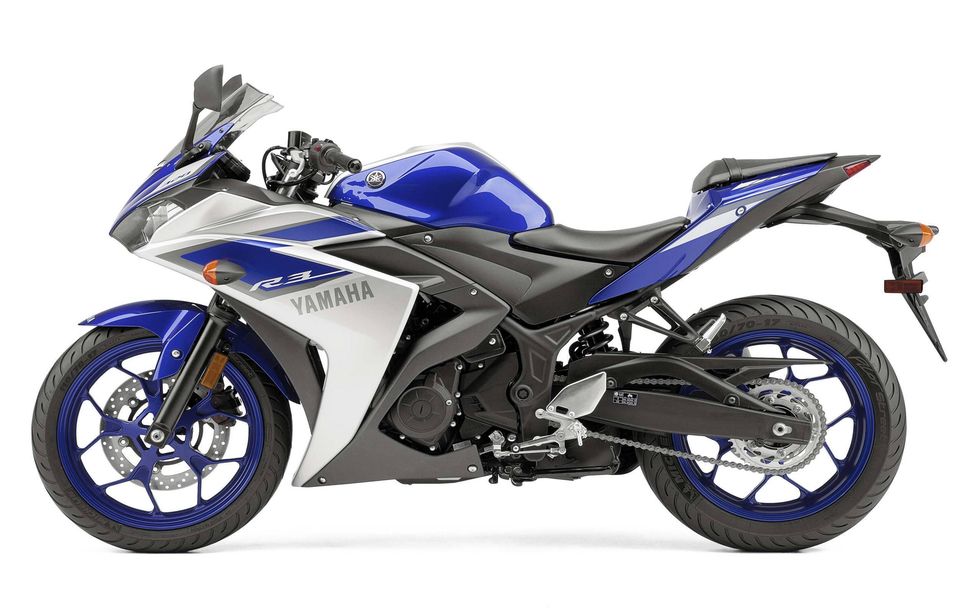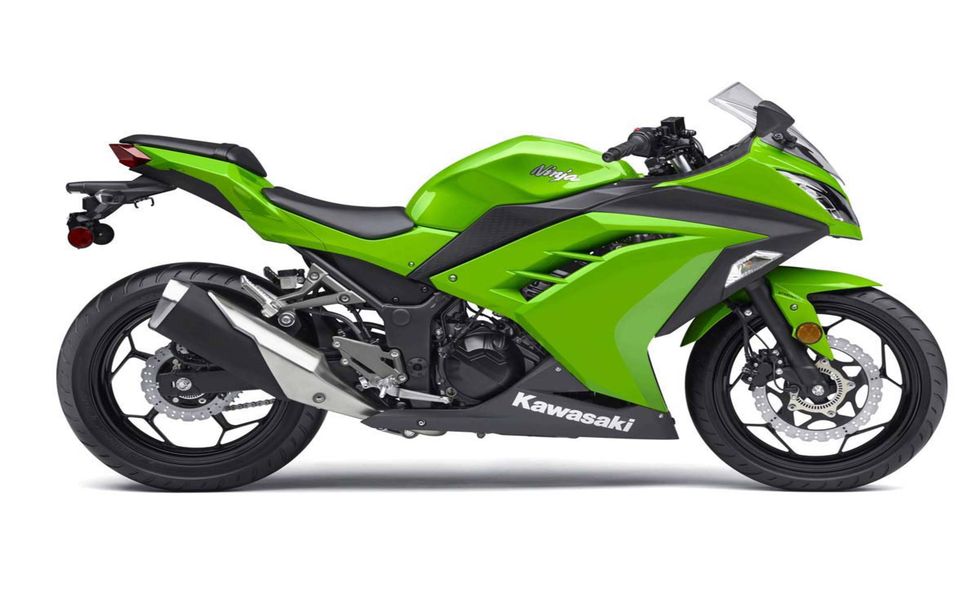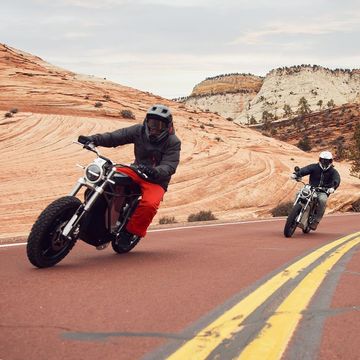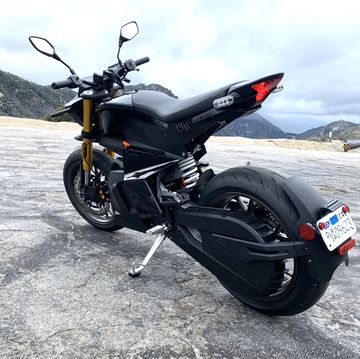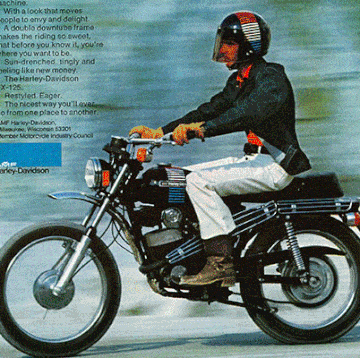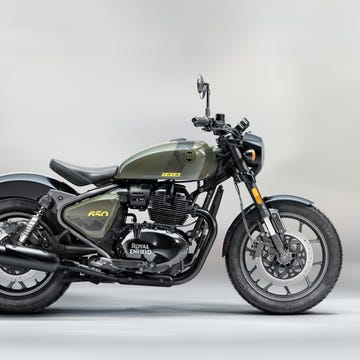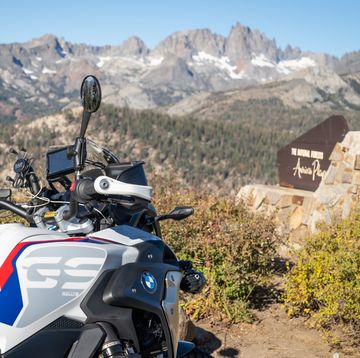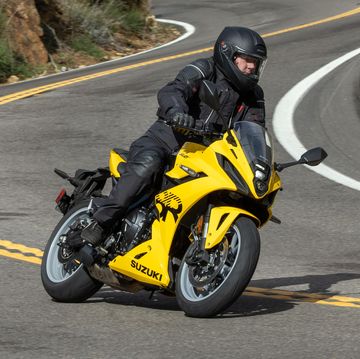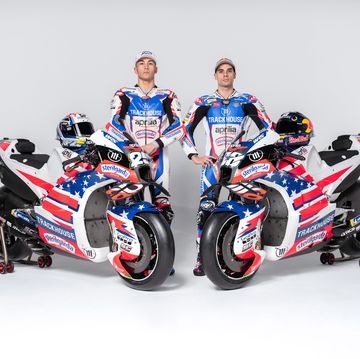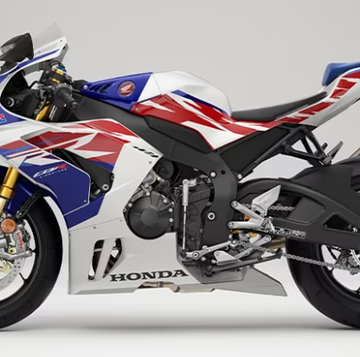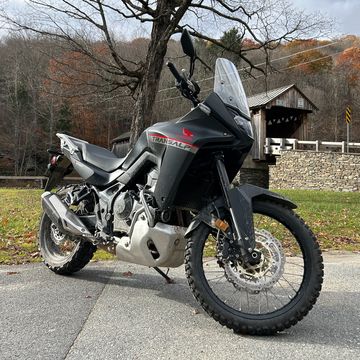While there are amazing superbikes on the market, with power-to-weight ratios that would frighten a physicist, on the other end of the spectrum you’ll find the best entry-level sport bikes ever made. With around 300ccs of displacement canned in one or two cylinders, they offer enough power to have fun, but not enough to get into too much trouble. You can move up to a larger-displacement bike later, but you’re going to want to start—or restart—your riding career on one of these.
2015 KTM RC 390
From a distance, the KTM RC 390 is an awful lot like the mighty KTM 1190 RC8 R superbike. That’s just fine with RC 390 buyers, who get a reasonable facsimile of the peg-scraping 1190 for about $11,000 less. Of course, they also get about 800ccs less displacement. Life’s full of tradeoffs. The 43-hp, 23-lb-ft, 373cc, liquid-cooled single-cylinder drives a six-speed trans in what is the sportiest sport bike in this class.
You’ll love the handling in the very first turn. Just hang your hide off the side and keep steering, twisting the torquey throttle as you apex and powering out with ease seemingly anywhere on the tach.
It likes to stay above 4,000 rpm when underway (redline is at 10,000 rpm), but it doesn’t complain at lower revs. Top speed? Let’s say, in theory, a rider could easily tuck behind the windscreen and hit 105 and not even know it.
Our favorite of the bunch, the RC 390 has the most power and torque. It handles like a real superbike, minus some of the super. At $5,499, it’s also the priciest. The less-expensive, less-aggressive 390 Duke is also worth a look.
2015 Honda CBR300R
Honda upgraded its entry-level sport bike last year, stroking the CBR250R from 249 to 286ccs and borrowing some style from the racy CBR1000R. This is the sporty-looking result.
The estimated 30 hp is characteristically peaky, and though peak torque is estimated at 20 lb-ft, you don’t get a very broad band compared to the rest of the class. But low power at lower revs is exactly what you want in
a beginner bike. Once you wind it out, the engine revs happily into five figures fairly smoothly. Flopped over the gas tank with your face shield tucked behind the little windscreen, you can cruise comfortably at 80 mph.
Once the CBR300R gets on a mountain road, it really comes to life, feeling at home between 7,000 and 10,000-plus rpm. Front shocks and the tires were a little stiffer than you’d ideally set it up for our test road—in curves, the bumps would ever-so-slightly knock the handlebars offline—but it was barely noticeable. At $3,999 to start (minus the cool bodywork, which adds $1,000), this is the cheapest bike in the class. ABS costs an extra $500. It could easily lead to a lifetime of Hondas. Ride Red, baby!
2015 Yamaha YZF-R3
Straddle the R3 and you may be impressed with how light 368 pounds feels. Its 321ccs make an estimated 45 hp, while torque is 22 lb-ft at 9,000 rpm. Power goes through a six-speed trans to a chain drive, and off you go.
We spent a long day on an R3 on twisting hill-country roads, then at the new and very twisty West Loop of Thunderhill racetrack. Hammer on this bike and really push it, and you are rewarded with a suitably firm KYB suspension that luges through corners with ease and alacrity. This was more apparent on-track, where we found the bike downright racy. Lean into corners with your keister hanging off the seat like in the superbike posters, and it responds with grip and smooth, torquey power delivery.
At $4,990, this is a great bike for taking your first track-day riding lessons, for instance, but would also be satisfying for just lapping your favorite road course.
2015 Kawasaki Ninja 300
Kawasaki launched the predecessor to this bike, the Ninja 250, almost 30 years ago. The journeyman Ninja is now up to 296ccs in displacement, still divided between two liquid-cooled, upright, parallel cylinders now making an estimated 35 hp to move the 379-pound bike down the road with urgency.
Push-button-start it and you’ll immediately see that it’s by far the smoothest, quietest bike in the class. The engine revs so smoothly to 10,000 rpm and beyond (redline is at 13,000) that you almost forget which gear you’re in. The power and torque feel pretty evenly distributed across the tach, too, though as in all the bikes in this class, there’s not a lot of either.
Tuck behind the windscreen and you’re clearing 100 mph easily. On the twisting two-lanes of the Santa Monica Mountains, we didn’t get the same urge to lean into apexes as we had on the its competitors. The Ninja ($5,299 with ABS; $4,990 without) cornered well but not in the same way as the KTM or even the Yamaha R3, both of which made you want to slide a bun off the side and scrape something. But for riding every day on all kinds of roads, it was great—the utility infielder of entry-level sport bikes.

